4EBP1-mediated SLC7A11 protein synthesis restrains ferroptosis triggered by MEK inhibitors in advanced ovarian cancer
- PMID: 38842940
- PMCID: PMC11383183
- DOI: 10.1172/jci.insight.177857
4EBP1-mediated SLC7A11 protein synthesis restrains ferroptosis triggered by MEK inhibitors in advanced ovarian cancer
Abstract
Loss of ferroptosis contributes to the development of human cancer, and restoration of ferroptosis has been demonstrated as a potential therapeutic strategy in cancer treatment. However, the mechanisms of how ferroptosis escape contributes to ovarian cancer (OV) development are not well elucidated. Here, we show that ferroptosis negative regulation signatures correlated with the tumorigenesis of OV and were associated with poor prognosis, suggesting that restoration of ferroptosis represents a potential therapeutic strategy in OV. High-throughput drug screening with a kinase inhibitor library identified MEK inhibitors as ferroptosis inducers in OV cells. We further demonstrated that MEK inhibitor-resistant OV cells were less vulnerable to trametinib-induced ferroptosis. Mechanistically, mTOR/eIF4E binding protein 1 (4EBP1) signaling promoted solute carrier family 7 member 11 (SLC7A11) protein synthesis, leading to ferroptosis inhibition in MEK inhibitor-resistant cells. Dual inhibition of MEK and mTOR/4EBP1 signaling restrained the protein synthesis of SLC7A11 via suppression of the mTOR/4EBP1 axis to reactivate ferroptosis in resistant cells. Together, these findings provide a promising therapeutic option for OV treatment through ferroptosis restoration by the combined inhibition of MEK and mTOR/4EBP1 pathways.
Keywords: Cancer; Drug therapy; Oncology; Therapeutics; Translation.
Conflict of interest statement
Figures
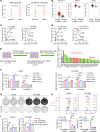

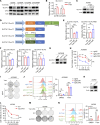
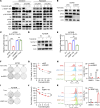
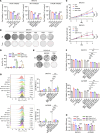
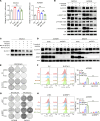


Similar articles
-
Icariside II induces ferroptosis through the down-regulation of SLC7A11 in ovarian cancer.J Ovarian Res. 2025 Apr 5;18(1):71. doi: 10.1186/s13048-025-01650-1. J Ovarian Res. 2025. PMID: 40186304 Free PMC article.
-
Unbiased Proteomic and Phosphoproteomic Analysis Identifies Response Signatures and Novel Susceptibilities After Combined MEK and mTOR Inhibition in BRAFV600E Mutant Glioma.Mol Cell Proteomics. 2021;20:100123. doi: 10.1016/j.mcpro.2021.100123. Epub 2021 Jul 21. Mol Cell Proteomics. 2021. PMID: 34298159 Free PMC article.
-
AZD1775 synergizes with SLC7A11 inhibition to promote ferroptosis.Sci China Life Sci. 2025 Jan;68(1):204-218. doi: 10.1007/s11427-023-2589-1. Epub 2024 Sep 6. Sci China Life Sci. 2025. PMID: 39245684
-
Cystine transporter SLC7A11/xCT in cancer: ferroptosis, nutrient dependency, and cancer therapy.Protein Cell. 2021 Aug;12(8):599-620. doi: 10.1007/s13238-020-00789-5. Epub 2020 Oct 1. Protein Cell. 2021. PMID: 33000412 Free PMC article. Review.
-
Inhibiting 4EBP1 in Glioblastoma.Clin Cancer Res. 2018 Jan 1;24(1):14-21. doi: 10.1158/1078-0432.CCR-17-0042. Epub 2017 Jul 10. Clin Cancer Res. 2018. PMID: 28696243 Free PMC article. Review.
Cited by
-
WDFY4 Promotes the Progression of Atherosclerosis by Regulating Ferroptosis Mediated by the LAPTM5/CDC42/mTOR/4EBP1/SLC7A11 Pathway.J Cell Mol Med. 2025 Aug;29(15):e70729. doi: 10.1111/jcmm.70729. J Cell Mol Med. 2025. PMID: 40755163 Free PMC article.
-
eIF4F-mediated dysregulation of mRNA translation in cancer.RNA. 2025 Feb 19;31(3):416-428. doi: 10.1261/rna.080340.124. RNA. 2025. PMID: 39809544 Free PMC article. Review.
-
Whey Protein Mitigates Oxidative Stress Injury and Improves Protein Synthesis in Mouse Skeletal Muscle by Regulating the SIRT1/Nrf2/HO-1 Axis and AMPK/TSC2/mTOR/4EBP1 Pathway.J Food Sci. 2025 Jul;90(7):e70286. doi: 10.1111/1750-3841.70286. J Food Sci. 2025. PMID: 40660422 Free PMC article.
-
Advances in Ferroptosis Research: A Comprehensive Review of Mechanism Exploration, Drug Development, and Disease Treatment.Pharmaceuticals (Basel). 2025 Feb 26;18(3):334. doi: 10.3390/ph18030334. Pharmaceuticals (Basel). 2025. PMID: 40143112 Free PMC article. Review.
-
Ferroptosis as a therapeutic vulnerability in MDM2 inhibition in dedifferentiated liposarcoma.Oncol Lett. 2025 Apr 7;29(6):269. doi: 10.3892/ol.2025.15015. eCollection 2025 Jun. Oncol Lett. 2025. PMID: 40247991 Free PMC article.
References
MeSH terms
Substances
LinkOut - more resources
Full Text Sources
Medical
Research Materials
Miscellaneous

